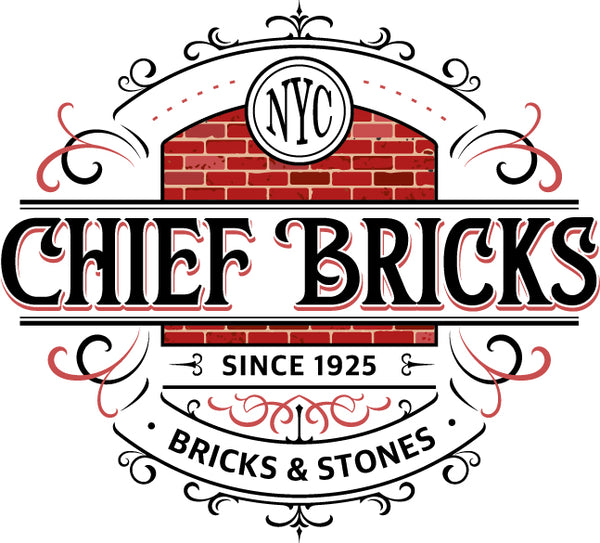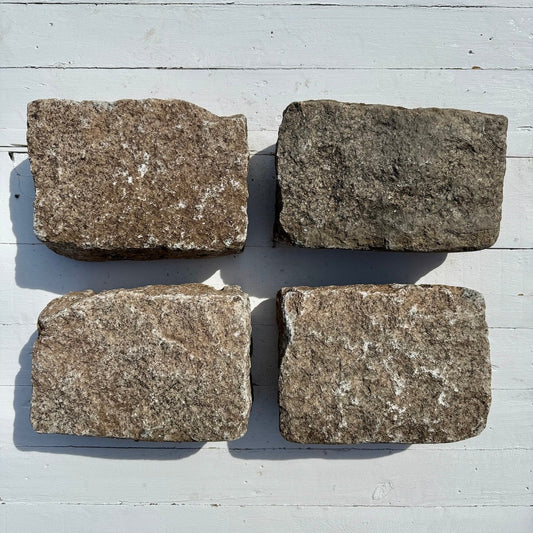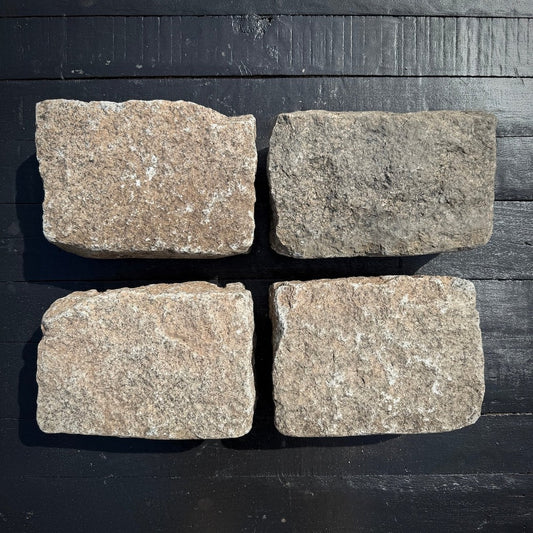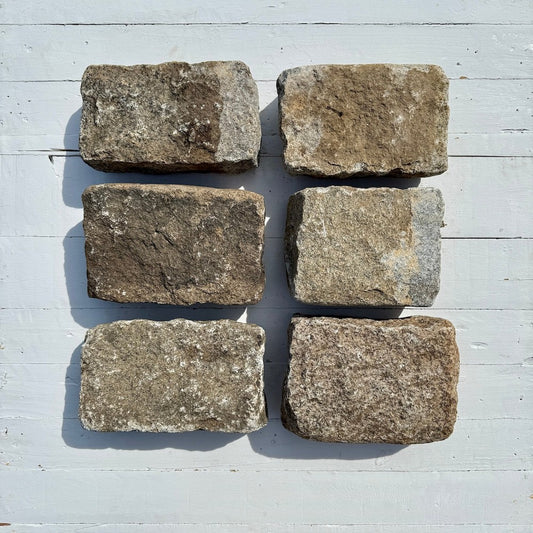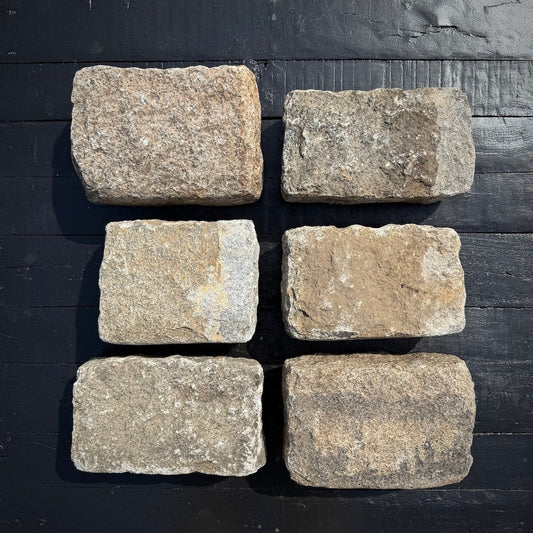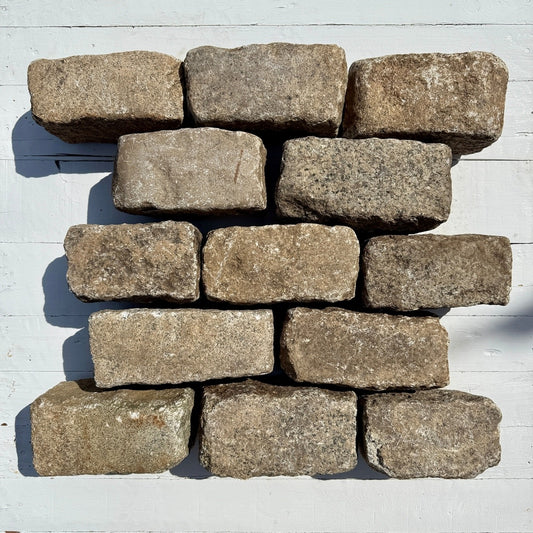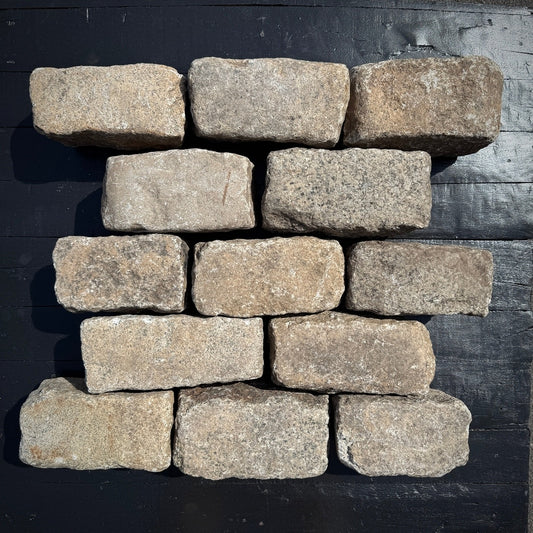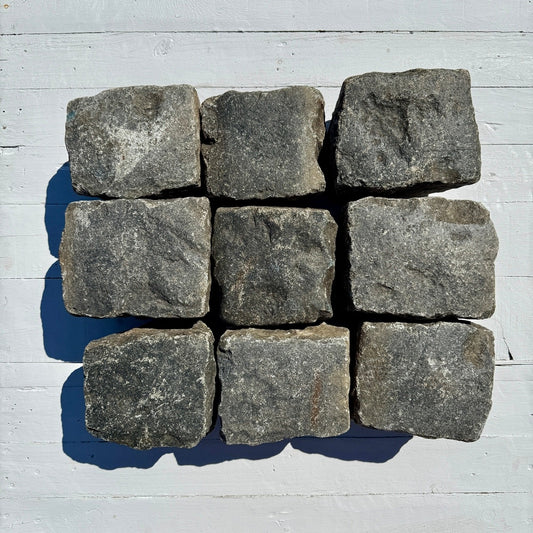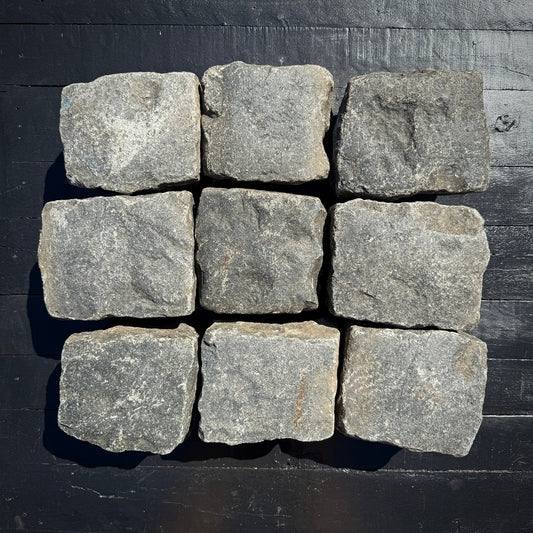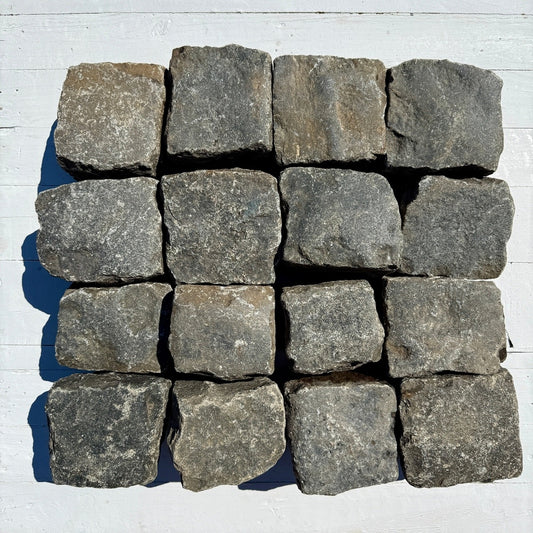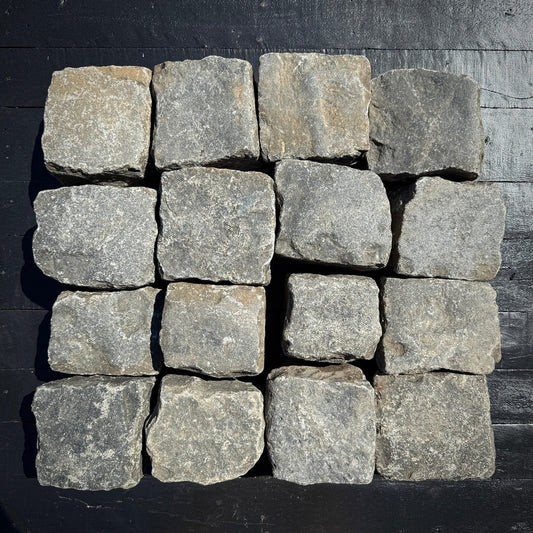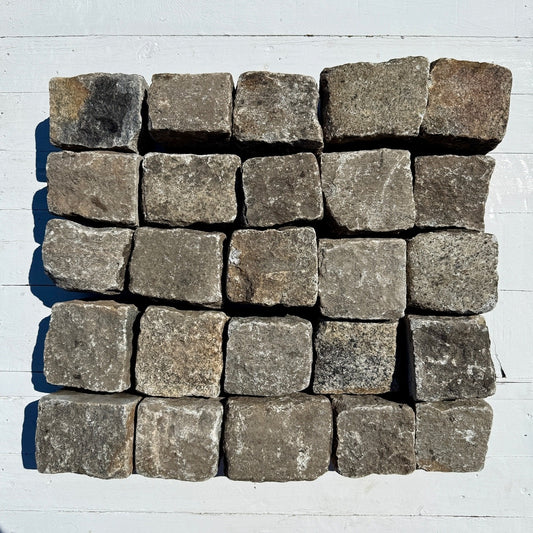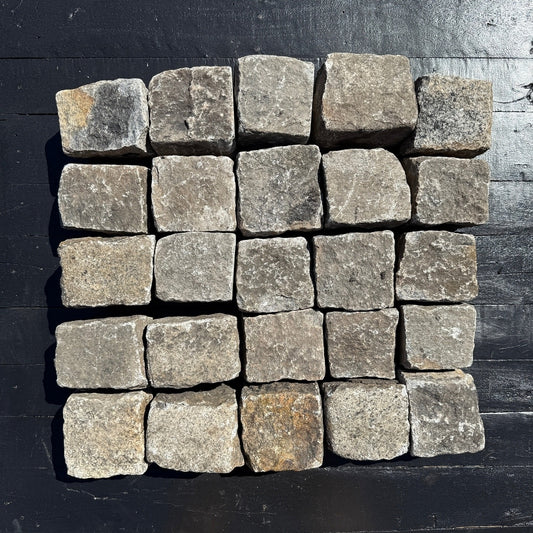Have you ever walked down a historic street and admired the stone pavers under your feet? There's a certain feeling you get from stones that have weathered decades, or even centuries, of history. With reclaimed cobblestone, you can bring that same timeless character directly to your home or project. It's about laying down a story, not just paving a surface.
These stones offer a connection to the past that you cannot get with new materials. They have already proven they can stand the test of time. Choosing genuine reclaimed stone gives your project a soul and a sense of permanence that is hard to replicate.
Table of Contents:
- What Exactly Is Reclaimed Cobblestone?
- The Story Behind Every Stone
- Types and Sizes of Reclaimed Cobblestone
- Why Choose Genuine Reclaimed Cobblestone?
- Designing with Reclaimed Cobblestone
- Bringing History Home: Residential Uses
- Elevating Commercial and Public Spaces
- What to Expect: Sizing, Color, and Installation
- Conclusion
What Exactly Is Reclaimed Cobblestone?
Reclaimed cobblestones are historic stones salvaged from old roads, plazas, and industrial sites. Instead of being discarded during modernization projects, they are carefully collected and given new purpose. We source many of our stones from historic cities, preserving pieces of their past.
Most of these paving cobbles are made from reclaimed granite, one of the toughest natural stone materials on earth. They were originally hand-cut and laid by masons generations ago. The wear from countless footsteps, carriage wheels, and weather gives each one a distinctive, softened surface finish.
People sometimes use the term cobblestone to refer to any old stone paver. True antique cobblestones, however, are often granite blocks, sometimes called granite setts or Belgian Block. They are different from the rounded river rocks that were the very first cobbles.
The Story Behind Every Stone
Every piece of reclaimed cobblestone has a past. Imagine the history they have witnessed on the streets of old cities like New York City. They possess an authenticity that newly manufactured pavers simply cannot match, as this is real, natural aging.
The beauty is in their imperfections and subtle variations. You will see different colors, from light grays to warm pinks and tans, reflecting their diverse geological origins. Their surfaces are worn smooth from use, not from a factory process, which gives them a soft and inviting texture.
This history makes them a focal point for any design. They bring a story and a sense of gravity with them. You are literally installing a piece of American or European history into your landscape.
Types and Sizes of Reclaimed Cobblestone
When selecting reclaimed cobblestones, you'll find a variety of types and sizes, each suited for different applications and aesthetics. Understanding these differences can help you make the best choice for your project. Much of the antique european material available today originates from streets and town squares across Europe.
European cobblestone often includes a rich mix of colors due to the diverse geology of the continent. The stones were quarried and used for centuries, developing a deep patina. This antique stone is highly sought after for its character and historical significance.
The size of the cobblestone has a major impact on the final look. Common sizes include regular cubes (4-6 inches), which are great for detailed patterns, and larger rectangular stones (7-10 inches). For a bolder statement, you can opt for jumbo cobblestone (10-11 inches), or even jumbo XL / Super Jumbo blocks (12-14 inches) which can create a very rustic, substantial appearance.
| Cobblestone classification | Average size
|
Weight per stone
|
|---|---|---|
| Reclaimed Jumbo XL / Super Jumbo | 12" x 8" x 5" | 40 lbs |
| Reclaimed Jumbo | 11" x 7" x 4" | 30 lbs |
| Reclaimed Regulation | 9" x 5" x 5" | 20 lbs |
| Reclaimed Cube 7in | 7" x 7" x 7" | 30 lbs |
| Reclaimed Cube 6in | 6" x 6" x 6" | 21 lbs |
| Reclaimed Cube 5in | 5" x 5" x 5" | 9 lbs |
| Reclaimed Cube 4in | 4" x 4" x 4" | 6 lbs |
Why Choose Genuine Reclaimed Cobblestone?
There are many reasons designers and homeowners seek out these historic materials. They offer benefits that go far beyond their good looks. This is an investment in durability and classic style.
Unmatched Durability and Strength
The reclaimed granite you get has already survived over a hundred years of heavy use. It has withstood traffic, harsh weather, and changing seasons without falling apart. Granite is known for its incredible hardness, which is why it was the preferred material for historic roads.
This means reclaimed cobblestones are more than capable of handling your driveway paving, patio, or walkway. You can expect them to last for generations with minimal maintenance. They are a practical choice for almost any high-traffic application, far outlasting a typical brick driveway.
Timeless Curb Appeal and Character
Nothing adds curb appeal quite like real antique stone. The authentic, rustic look of reclaimed cobblestones complements a wide range of architectural styles. It works just as well with a historic colonial home as it does with a sleek modern design.
This timeless appeal can also add to your property's value. It signals a commitment to quality materials and classic design. A cobblestone driveway or patio is a feature that truly stands out from the rest.
An Environmentally Conscious Choice
Using reclaimed materials is an excellent way to build sustainably. By salvaging these stones, we divert them from landfills. This gives them a second life in a beautiful new setting.
It also reduces the environmental impact of new quarrying. Mining and transporting new stone requires significant energy and resources. Choosing reclaimed cobblestone is an eco-friendly decision you can feel good about.
Designing with Reclaimed Cobblestone
Planning your project is an exciting step where you can decide how to best use the material's character. Professional stone curators can help source the right type of stone for your vision. A skilled stone designer can help you visualize the final outcome before installation begins.
Chief Bricks offers quality product pictures and visual inspiration to see how different cobblestones will look. For more technical projects, architects and landscape designers can use CAD design patterns and hatch files for precise layouts. This support can be invaluable for achieving a professional finish.
You can also create stunning effects by combining materials. Reclaimed cobblestone pairs beautifully with antique brick or reclaimed brick for borders and accents. You can also use complementary stone veneer or brick veneer on walls or foundations to create a cohesive design across your property.
Bringing History Home: Residential Uses
Reclaimed cobblestones are incredibly versatile around the home. They add character and function to almost any outdoor space. Here are just a few popular ideas to get you started.
- Driveways: This is perhaps the most classic use. A cobblestone driveway creates a grand entrance and can handle vehicle traffic with ease. Its durable surface will last a lifetime.
- Courtyards and Plazas: Transform a front entry or a backyard space into a welcoming European-style courtyard. It provides a beautiful and sturdy floor for outdoor living.
- Garden Paths: A rustic cobblestone path winding through a garden looks like it has been there forever. The stones blend beautifully with plants and other landscape stone elements.
- Patios and Terraces: Build an outdoor dining or seating area full of character. Cobblestones provide a stable, textured surface perfect for patio furniture.
- Pool Surrounds: While not for the entire pool deck, using cobblestones as an accent band adds a textured, slip-resistant zone. Their rugged look provides a great contrast to the smooth water.
- Fire Pit Areas: Granite is heat-tolerant, making cobblestones a perfect choice for the circle around a fire pit. It creates a natural and durable gathering spot.
- Steps and Edging: Use jumbo cobblestones to build solid, timeless stone steps or to edge garden beds and walkways. This creates a consistent look throughout your landscape.
- Wall Accents: You can incorporate cobblestones into walls as a type of building stone or wallstone veneer. This technique adds texture and historical interest to retaining walls or garden features.
Elevating Commercial and Public Spaces
The same qualities that make cobblestones great for homes also apply to commercial and civic projects. Their durability and historic feel can define the character of a public space. They handle high-volume pedestrian paving beautifully.
In a commercial setting, they create a memorable experience for customers. Think about an atmospheric patio for a restaurant or a premium entrance for a boutique hotel. It sets a tone of quality and permanence from the moment someone arrives.
For public spaces like town squares, parks, and historic districts, using reclaimed material is often essential. It maintains the area's historical integrity while providing a safe, long-lasting surface for everyone. These stones help preserve the spirit of a place.
| Project Type | Primary Benefit | Common Application |
|---|---|---|
| Restaurant Patios | Ambiance & Durability | Outdoor dining floors |
| Hotel Driveways | Timeless First Impression | Entry courts, drive lanes |
| Historic Districts | Authenticity & Preservation | Streetscapes, pedestrian paving |
| University Campuses | Stately Look & Low Maintenance | Walkways, quads |
| Public Parks | Natural Aesthetic & Hardiness | Pathways, gathering areas |
What to Expect: Sizing, Color, and Installation
Working with reclaimed cobblestone is straightforward, but it helps to know what to expect. Since these are salvaged materials, no two stones are exactly the same. This variation is a key part of their charm and authenticity.
Sorting and Sizing
Consistency is important for any paving project. That's why we separate the stones by size, a process that results in products often described as roughly dimensional. This makes sure your driveway or patio has a uniform and professional appearance when finished.
While reclaimed stones are not perfectly uniform like modern pavers, sorting them into size categories like "jumbo" or "regulation" allows for consistent joint spacing. For projects requiring tighter tolerances, some suppliers may offer dimensional cut or cut-to-size veneer options. However, most projects embrace the natural size variations.
The Natural Color Palette
Reclaimed granite cobblestones typically come in a mix of gray, charcoal, tan, and sometimes pink or brown tones. The color variation comes from the original quarries the stones were sourced from generations ago. When laid together, these different hues create a beautiful, textured tapestry of natural stone.
The color you see can also change with the weather. The stones often appear darker and more vibrant when wet. This dynamic quality adds to their appeal and connection to the natural environment.
A Note on Installation
Proper installation is vital for a lasting result. Like any paver, a solid installation base is the most important part of the job. This usually involves excavating the area and laying a compacted gravel sub-base, followed by a setting bed of sand or stone dust.
Once the base is prepared, the cobblestones are laid in the desired pattern. The joints between the stones can then be filled with several different materials. A loose filler like sand allows for better water permeability, which can help with drainage on your property.
For a more solid surface, polymeric sand can be used, which hardens when wet to lock the stones in place and inhibit weed growth. Alternatively, a traditional mortar joint provides the most rigid installation, creating a single, solid stone surface. The choice of joint filler depends on the project's specific needs for drainage and stability.
Conclusion
Using reclaimed cobblestone is a choice to build with meaning. You get a material that is not only beautiful and incredibly strong but also rich with history. These stones have already proven their worth over a hundred years, and they are ready for the next hundred.
From a grand driveway to a quiet garden path, reclaimed cobblestone adds a layer of character that new materials simply cannot offer. It connects your project to the past and gives it a timeless foundation. It is a decision that pays off in durability, beauty, and story for years to come.
